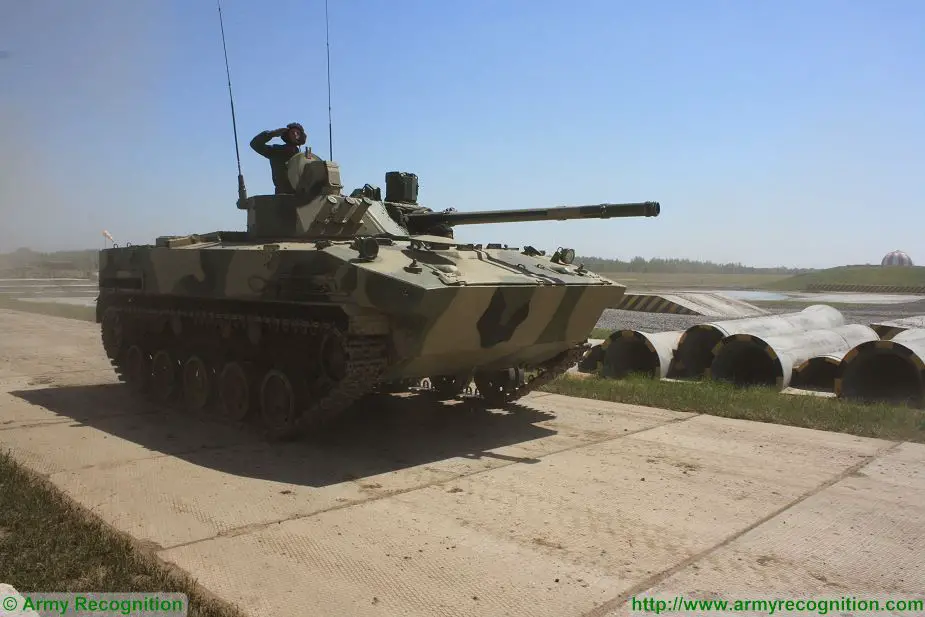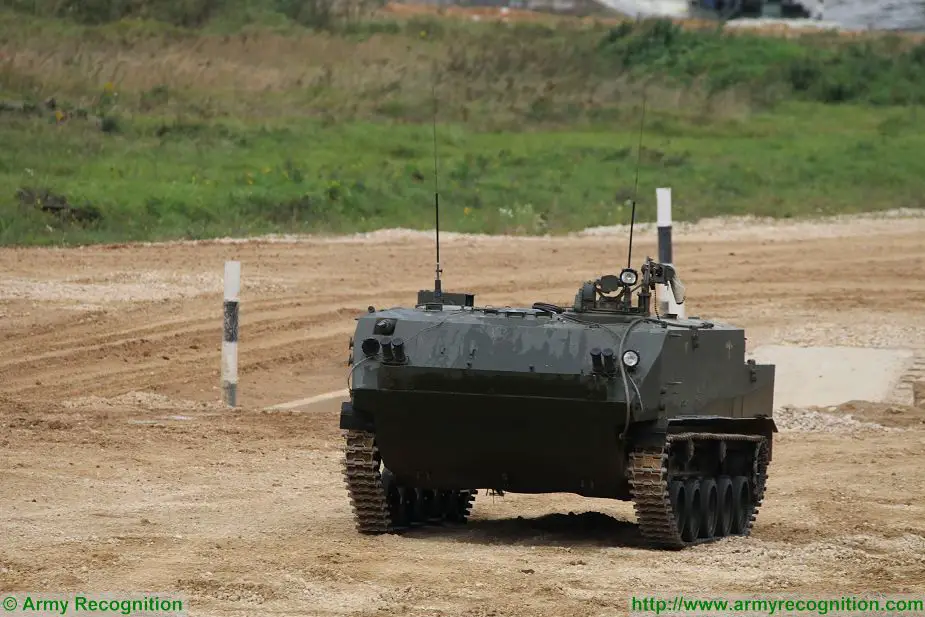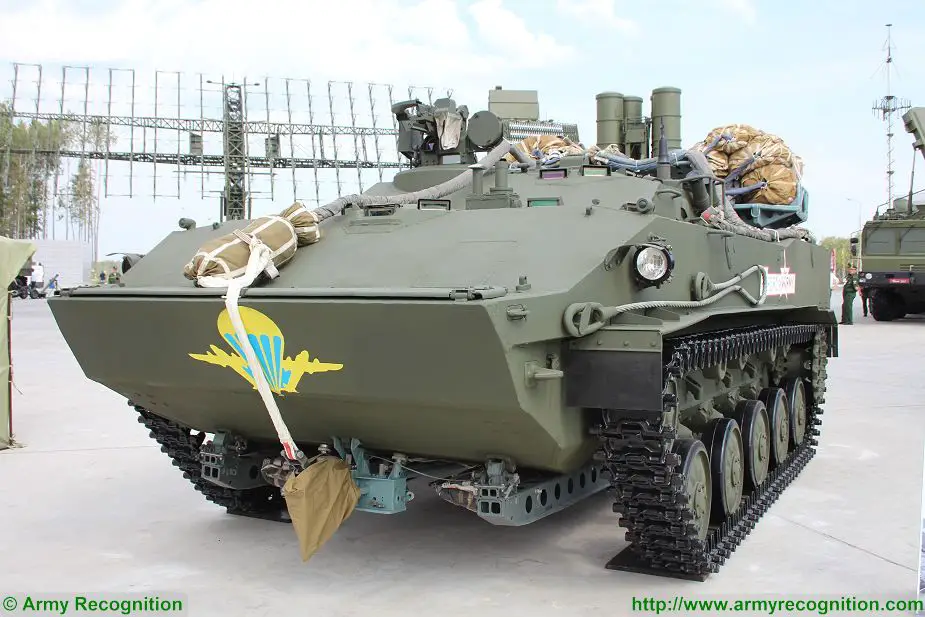Analysis new equipment & vehicles of Russian airborne troops
The Russian Airborne Forces continue to receive new arms and hardware and their share comprises 62 percent, Airborne Commander Colonel-General Andrey Serdyukov said in an interview with the Military-Industrial Courier. Combat training proceeded in strict compliance with the plan of the forces for 2016-2020. All events have been accomplished in full volume. The training intensity displays good dynamic. Over 400 tactical and command-staff exercises, including 300 with artillery and air defense engagement, were held in 2017. Live-fire combat training intensified over six percent.

BMD-4M airborne infantry fighting vehicle (Picture source Army Recognition)
All classes, exercises and drills were held on a competitive basis and the best units with the highest results were awarded the honorary "shock" title. The number of such units grew three times in the summer training period. 17 airborne units, comprising one regiment, nine battalions and seven companies are in the shock unit list of the Russian armed forces. As for December 1, 2017 they confirmed their high professionalisms during checks by the main combat training department and central command bodies of the Defense Ministry.
The Airborne Forces have received over 11 thousand new and upgraded weapons which is above 90 percent of the 2017 state defense order. The share of modern armaments and hardware comprises 62 percent. In two years four battalion sets of 120 BMD-4M and BTR-MDM Rakushka vehicles were supplied. They include two battalion sets delivered to Ulyanovsk separate airborne assault brigade this year. Besides, the force received over 100 upgraded weapons, including 2S9-1M self-propelled guns.
The air defense continues to upgrade. In 2015-2017 the units received close to 500 modern automated reconnaissance and command complexes, new Verba portable missiles, and over 30 upgraded Strela-10MN missile complexes.
The airborne troops are the rapid reaction force which comprises well-trained units armed with the latest weapons. They have to be highly mobile and capable of rapid regrouping and deployment in any direction for strategic deterrence both on the Russian territory and outside it. I would like to stress that the airborne troops are built up as the backbone of rapid reaction.

BTR-MDM airborne tracked multi-role armoured vehicle (Picture source Army Recognition)
On December 1, the organizational events to create a separate airborne assault battalion in Novorosiisk mountain division deployed in Feodosiya and a separate repairs and maintenance battalion in Moscow region have been completed. In 2018 all formations will complete organizational events and create radio-electronic warfare and drone units. Tanks units will be formed to augment the combat might. Contracted servicemen comprise over 70 percent of the troops which are 100 percent armed with military and specialized hardware.
Scientific work focused this year on various R&D. In 2017 the chemical reconnaissance vehicle RKhM-5M designed by the Povozka-2 project became operational.
Barnaul-T R&D produced a planning module paradropped to airborne units to simultaneously track a hundred of air objects and a paradroppable reconnaissance and command module to detect targets in a 40-km range which is deployed in five minutes.
Acceptance trials of an airborne training complex were completed. It was designed to train landing with the Arbalet parachute from the moment of the jump to landing in the assigned point, as well as emergency situations with the use of standby parachute. The complex can train up to 10 paratroopers at a time.
Kassiopea-D R&D is underway to streamline airborne command system and expand its automatic capabilities. It will develop a communications and automated command system for operation on armored tracked BMD-4M and BTR-MDM. R&D to develop a multifunctional robot on a light and medium chassis for ground and airborne troops is undergoing acceptance trials.
Research is underway in parachutes with high gliding capabilities for paratroopers. The task is to create reliable and controllable systems that can operate without human interference. Cargo parachutes of various carrying capacities are also being designed.
Thus, the ongoing and future R&D covers all armaments of the airborne troops. The main effort in the new year will focus on increased combat capability of airborne units and formations. One of the main tasks is to intensify combat training and keep the quality of the events. In 2018 airborne troops plan six command-staff exercises under my command. Besides, close to 450 tactical drills with paradropping and live fire will be held with the engagement of artillery and air defense. The airborne troops will participate in seven joint exercises with foreign countries. Every second one will be held outside Russia, Russian Airborne Commander Colonel-General Andrey Serdyukov said in an interview with the Military-Industrial Courier.

RKhM-5 airborne NBC reconnaissance armoured vehicle (Picture source Army Recognition)


























